Florian Labourel
Metabolism and multi-stable equilibria in the gut microbiome
Team: Florence Bansept (LCB/CPT)
His background
March 2024 - present | CENTURI postdoctoral student
2022 - 2024 | Post-doctoral Research Associate, University of Bath, United Kingdom
2018 - 2021 | PhD. student in Evolutionary Biology, Biomathematics and Bioinformatics, Université Claude Bernard Lyon 1, France
2015 - 2018 | MSc. Ecology, Evolution and Genomics with honors, Université Claude Bernard Lyon 1, France
Contact
About his postdoctoral project
Personal statement: Biological traits are often complex. But how do these traits arise from molecular mechanisms and their interactions? And how does their convoluted architecture interact with ecology and evolution to mould the incredible diversity of Life that stretches across all scales, from tiny molecules to ecosystems? Typically, the mapping between genotypes, phenotypes and fitness is itself convoluted and depends on the environment, while (co)evolutionary processes constantly feed back on such maps, often biasing them in certain directions. To make sense of this messy complexity, I develop a broad range of mathematical and computational models derived from mechanistic underpinnings and contrast their outcomes with biological data using for instance molecular data analysis or published datasets. More specifically, my current research focuses on the mechanisms behind cooperation in living systems (with a focus on the cellular level), how contingency can impact the resulting interdependencies and whether this in turn obscures the strength of natural selection.
Post-doctoral project: In order to reproduce, organisms need to synthesize new molecules (e.g., proteins). Synthesis requires in turn both energy and building blocks. These building blocks can either be produced through metabolism, or they can be taken from the environment. But when should a cell choose one or the other solution to maximise its fitness? Such a choice crucially depends on which nutrients are present in the environment, and how often, and on the relative costs of each process -- uptake vs. de novo production. Noticeably, the environment itself usually contains multiple species that modify the available nutrients, hence creating communities, and the assemblage of such communities is neither a deterministic nor a constant process. Instead, communities are subject to feast and famine dynamics of multiple nutrients during which migrants, and hence potential competitors, are also randomly brought. Using theoretical models of metabolism and community assembly, we aim to understand how the joint dynamics of nutrients and competitors influences ecological and genetic interdependencies between species. Our ultimate goal is to predict the functional steady-state(s) of gut diversity and whether catastrophic events can impact both temporarily and on the long run these steady-states when they are numerous (as seems documented in both soil and gut experiments).







